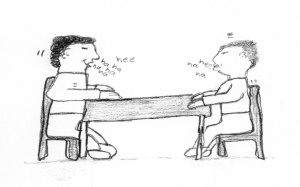Concentrating on Concentration
Help your students increase their ability to concentrate with these exercises and discussion prompts.
Your content has been saved!
Go to My Saved Content.Concentration, a continuous flow of mental energy directed by learners at what they’re learning, is crucial in any lesson. Concentration requires practice, separate from core subjects, because of its vital connections to academics, social and emotional learning, and everyday life. Yet we teachers rarely practice this fundamental skill in the classroom.
Think about it: How long can you concentrate in a speeding world without getting lost in a distracting thought, feeling, or mental image? How often do you experience an entire class totally tuned in to the same channel you’re on? We talk about kids’ fragmented attention span but do nothing about it.
But we can teach children to concentrate by introducing mental and physical exercises to motivate this skill in creative, absurd, fun, challenging ways.
In my previous article, “Using ‘Music Writing’ to Trigger Creativity, Awareness, Motivation, and Poetry,” I described how an original music technique improves outer and inner concentration. Outer concentration is looking closely at external reality. Inner concentration also revolves around observation—the target is the world of thoughts, feelings, and experiences, taking students into creativity and intrapersonal communication.
From Music Writing I created a practical application called Concentration Workouts, which also expand focusing skills and involve outer and inner concentration.
These activities’ long-range goal is to improve students’ ability to concentrate on core subject lessons. As I work on their focus, I also stir their imagination with novel exercises to stimulate the brain. The main objective throughout the workouts is to teach children in grades 2–6 and beyond to keep cool, concentrate, and not lose focus even when distractions arise.
Concentration Workouts Procedure
Concentration Workouts all involve a few steps. Students perform a workout while concentrating totally on the given activity, recalling and reflecting on what happened outside and inside. They should describe their experiences in 75 words or more, or as an alternative draw a sketch of what they’re thinking. Finally, they should share their experiences orally, discussing them with their classmates and teacher.
When describing their experiences, students should explain what happened on the inside and outside; whether they lost concentration and why; and how they got their concentration back if they lost it.
Sample Concentration Workouts
• Say your name silently (eyes closed) over and over for two minutes.
• Stare at a friend eyeball-to-eyeball for five minutes.
• Draw designs in color on paper for 15 minutes.
• Tap a balloon back and forth with a classmate for three minutes.
• Eat a peppermint candy until it’s finished (time varies).

For the first exercise above, I tell students, “Stay focused only on your name. If you lose focus, gently bring it back to your name. You have 25 minutes to complete the Concentration Workout. Take two minutes of ‘think time’—to recall and reflect—before writing about whatever happened inside. Experiences might include: mind pictures, thoughts, ideas, feelings, memories, dreams, or fantasies. There are no right or wrong answers. Give details of your experiences. Be open and honest in the discussion that follows.”
You can adapt these instructions to fit the other Concentration Workouts. The total time for this is 45 minutes: 25 for the workout plus thinking and writing, and 20 for class discussion.
Discussing Student Responses to “Say Your Name Silently”
There are several common responses to this exercise. Here are a few questions to spark your class discussion.
I recognized myself more than before and felt happy. What does the writer mean by “I recognized myself more than before”? Why did she feel happy? What mind pictures might she be observing? Was she concentrating? Why or why not?
I couldn’t take it. I got confused, mixed up. I don’t know what happened. Why do you think the writer got confused? Who else had a hard time concentrating on their name? Why? Describe what you experienced. How did you refocus?
I saw in my mind that I was alone in school. There was fog in the hallway. I heard my name called. I felt scared. A phantom came towards me and said my name. Name this type of experience. What mind pictures pop out? What feelings are expressed? Where did the student’s focus go?
Once again, adapt these questions to suit whichever Concentration Workout you use.
Concentration Means Connection and Communication
Concentrating on concentration is fundamental for learning anything. Let young people realize what concentration is through their own power and empower themselves. A great teacher will get students’ attention, but what happens to their concentration skills when they leave that classroom? Will their concentration be as strong if the next teacher is not as dynamic?
Experimenting with this skill teaches children to get into the present moment, which improves self-perception, communication, listening, observation, and motivation. In my experience, Concentration Workouts have positive cumulative effects. In an age of diminished attention spans, these activities will engage and prepare students to be lifelong readers and learners.
So why is teaching concentration overlooked in education? Why has an important skill connecting students with outer and inner experiences been left out of the curriculum?
